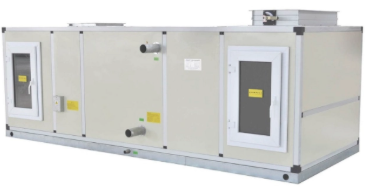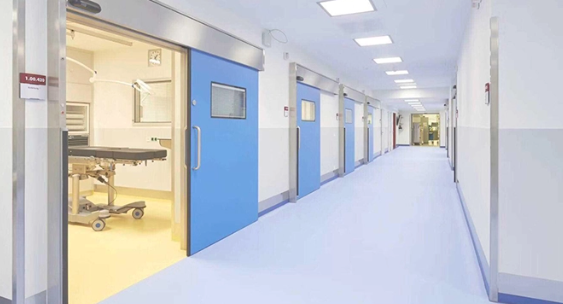Views: 0 Author: Site Editor Publish Time: 2025-08-13 Origin: Site






Cleanroom systems are essential in a wide range of industrial, pharmaceutical, and research applications where maintaining a contaminant-free environment is crucial. These controlled environments are designed to minimize the presence of airborne particles, microorganisms, and other contaminants, ensuring high - precision operations and compliance with strict quality standards. The role of HVAC (Heating, Ventilation, and Air Conditioning) systems in maintaining these controlled environments cannot be overstated. HVAC systems are integral to regulating temperature, humidity, and airflow, thereby supporting the overall functionality and efficiency of cleanroom operations. In this article, we will delve into the intricacies of cleanroom system monitoring and HVAC integration, exploring their significance, key components, and best practices.
Cleanroom system monitoring refers to the continuous assessment of various environmental parameters within a cleanroom. This process is vital for preventing contamination and ensuring compliance with international standards such as ISO (International Organization for Standardization) and FED (Federal Standard 209E). Monitoring supports safety, precision, and operational efficiency by providing real - time data on the conditions within the cleanroom. This enables prompt detection of deviations and allows for timely corrective actions, thereby maintaining the integrity of sensitive operations.
A variety of tools and techniques are employed in cleanroom monitoring:
Optical Particle Counters: These devices use light scattering to detect and count airborne particles. They provide real - time data on particle concentration and size distribution.
Condensation Particle Counters: These are used to detect ultra - fine particles that may not be visible to optical counters. They work by enlarging particles through condensation, making them easier to detect.
Microbial Sampling Devices: These include settle plates, contact plates, and active air samplers. Settle plates are passive samplers that collect airborne microorganisms over a period of time, while contact plates are pressed onto surfaces to detect microbial contamination. Active air samplers use pumps to draw air through a collection medium, capturing microorganisms for analysis.
Anemometers and Magnahelic Gauges: Anemometers measure airflow velocity, ensuring that the airflow patterns within the cleanroom are consistent and meet the required standards. Magnahelic gauges, on the other hand, are used to measure differential pressure, which is crucial for maintaining the desired pressure differential between the cleanroom and the surrounding environment.
Digital Sensors and Integrated Monitoring Systems: Modern cleanrooms often employ digital sensors that provide continuous, real - time monitoring of various environmental parameters. These sensors are integrated into centralized monitoring systems that can log data, generate alerts for deviations, and provide comprehensive reports for regulatory compliance.
HVAC systems play a pivotal role in maintaining the controlled environment within a cleanroom. They regulate temperature, humidity, and airflow, ensuring that these parameters remain within the specified ranges. Additionally, HVAC systems support positive and negative pressurization, which is crucial for preventing the ingress or egress of contaminants. HEPA (High - Efficiency Particulate Air) and ULPA (Ultra - Low Penetration Air) filters integrated into HVAC systems effectively remove airborne particles, thereby maintaining high - quality air within the cleanroom.
There are several types of HVAC configurations used in cleanroom systems:
Centralized Systems: These systems serve multiple cleanrooms and are typically located in a central mechanical room. They provide consistent environmental control across all cleanrooms but may lack the flexibility to accommodate specific requirements of individual cleanrooms.
Decentralized Systems: These systems are designed to serve individual cleanrooms or specific areas within a cleanroom facility. They offer greater flexibility and can be tailored to meet the unique needs of each cleanroom. However, they may require more maintenance and monitoring compared to centralized systems.
Laminar vs Turbulent Airflow Designs: Laminar airflow systems provide unidirectional airflow, which minimizes turbulence and ensures that particles are directed away from critical areas. This design is ideal for high - precision applications such as semiconductor manufacturing and pharmaceutical production. Turbulent airflow systems, on the other hand, mix and recirculate air, providing moderate contamination control and are suitable for less critical applications.
Air Recirculation vs Fresh Air Intake Ratios: The ratio of recirculated air to fresh air intake is an important consideration in HVAC design. Recirculating a portion of the air can reduce energy consumption and maintain consistent environmental conditions. However, a certain amount of fresh air intake is necessary to dilute contaminants and maintain indoor air quality.
| Component | Function | Notes |
|---|---|---|
| Air Handling Units (AHU) | Control temperature, humidity, and air pressure | Can integrate HEPA/ULPA filters |
| Ducting Systems | Direct and distribute airflow | Designed to minimize turbulence |
| Fan Filter Units (FFU) | Localized airflow control | Used in modular cleanrooms and ECAs |
| Sensors & Controls | Continuous monitoring and feedback | Integrated with building management systems (BMS) |

Modern cleanrooms often employ automated environmental monitoring systems that provide real - time data on temperature, humidity, pressure, and particle counts. These systems can generate alerts for deviations from set thresholds, enabling prompt corrective actions. Data logging capabilities ensure that all monitoring data is recorded and stored for regulatory compliance and analysis.
Effective integration between monitoring systems and HVAC systems involves creating feedback loops that allow HVAC settings to be adjusted based on real - time sensor data. For example, if particle counts exceed the specified limits, the HVAC system can increase airflow velocity or adjust filter settings to restore optimal conditions. Similarly, if temperature or humidity levels deviate from the desired range, the HVAC system can make the necessary adjustments to maintain the required environmental conditions. This automated feedback mechanism not only ensures consistent environmental control but also optimizes energy efficiency by avoiding over - conditioning.
Pharmaceutical Drug Compounding: In a pharmaceutical cleanroom, an HVAC system equipped with HEPA filters and real - time monitoring ensured that airborne particles were kept below the specified limits during drug compounding. The monitoring system provided continuous data on particle counts, temperature, and humidity, enabling operators to maintain a sterile environment and comply with regulatory standards.
ISO 5 Cleanrooms: In an ISO 5 cleanroom used for semiconductor manufacturing, particle counters integrated with the HVAC system provided real - time feedback on airborne particle concentrations. The HVAC system adjusted the airflow velocity and filter settings based on this feedback, ensuring that the cleanroom maintained the required ultra - low particle levels. This integration significantly reduced the risk of contamination and improved product yield.
By continuously monitoring airborne particles and microbial contaminants, and adjusting HVAC settings based on real - time data, cleanroom systems can significantly reduce the accumulation of viable and non - viable particles. This enhanced contamination control is crucial for maintaining product quality and safety in industries such as pharmaceuticals, medical devices, and biotechnology.
HVAC systems that are integrated with monitoring systems can optimize energy consumption by making adjustments based on real - time environmental data. This avoids over - conditioning of the cleanroom environment, thereby reducing energy costs and improving overall operational efficiency.
Continuous monitoring and documentation of environmental conditions ensure that cleanroom operations remain in compliance with ISO and FED standards. This is particularly important for industries that are subject to strict regulatory oversight, such as pharmaceuticals and medical devices. Compliance with these standards helps avoid product recalls, regulatory penalties, and damage to the company’s reputation.
Effective monitoring and HVAC integration can lead to significant cost savings by reducing downtime and maintenance costs. Early detection of environmental deviations allows for timely corrective actions, preventing equipment damage and process interruptions. Additionally, optimizing HVAC settings based on real - time data can extend the lifespan of filters and other HVAC components, further reducing operational costs.
The future of cleanroom monitoring and HVAC integration is likely to be shaped by advancements in technology and increasing regulatory demands. Some emerging trends include:
Smart Cleanrooms with IoT - Enabled Sensors: The Internet of Things (IoT) is revolutionizing cleanroom monitoring by enabling the use of smart sensors that provide real - time data on environmental conditions. These sensors can be integrated with HVAC systems to create highly efficient and responsive cleanroom environments.
AI - Based Predictive Monitoring: Artificial Intelligence (AI) and machine learning algorithms can analyze monitoring data to predict potential deviations and contamination risks. This allows for proactive maintenance and adjustments, further enhancing contamination control and operational efficiency.
Energy - Efficient HVAC Designs with Adaptive Control: Future HVAC systems are likely to incorporate advanced adaptive control mechanisms that optimize energy consumption based on real - time environmental data. This will not only improve energy efficiency but also reduce operational costs.
Integration with Facility Management Software: Cleanroom monitoring and HVAC systems are increasingly being integrated with facility management software, enabling comprehensive oversight and management of all facility - related operations. This integration facilitates proactive maintenance, resource optimization, and improved overall facility performance.

The frequency of monitoring depends on the specific ISO classification of the cleanroom and the criticality of the operations being conducted. In general, continuous monitoring is recommended for critical parameters such as airborne particles, temperature, and humidity. For less critical parameters, periodic monitoring may be sufficient. ISO 14644 - 1 provides guidelines on the frequency of monitoring for different cleanliness classes.
While HVAC systems play a crucial role in maintaining cleanroom standards, they cannot achieve optimal performance without integrated monitoring. Monitoring provides real - time data on environmental conditions, enabling timely adjustments to HVAC settings and ensuring that the cleanroom consistently meets the required standards. Without monitoring, HVAC systems may not be able to detect and correct deviations promptly, leading to potential contamination risks.
Failure of monitoring systems can have serious consequences, including increased risk of contamination, product recalls, and regulatory non - compliance. To mitigate these risks, it is essential to have backup strategies and redundancy in place, especially in high - risk environments. This may include installing duplicate monitoring equipment, implementing manual monitoring protocols, and having a rapid response plan in place for corrective actions.
Integration of monitoring and HVAC systems improves efficiency by enabling automated feedback loops. HVAC settings can be adjusted in real - time based on particle counts, humidity, and pressure changes, ensuring optimal environmental conditions. This not only enhances contamination control but also optimizes energy consumption and reduces maintenance costs.
In conclusion, the integration of cleanroom system monitoring and HVAC systems is essential for maintaining contamination control, ensuring regulatory compliance, and optimizing operational efficiency. By continuously monitoring key environmental parameters and adjusting HVAC settings based on real - time data, cleanroom operators can create highly controlled environments that support high - precision operations and protect sensitive products and processes. As technology continues to advance, the future of cleanroom monitoring and HVAC integration holds great promise for even greater efficiency, safety, and reliability.
For businesses looking to implement or upgrade their cleanroom systems, consulting with experienced cleanroom solution experts is highly recommended to ensure optimal design, integration, and performance. Shanghai Marya, a leading supplier of cleanroom systems, offers comprehensive solutions that cover consulting, design, construction, and installation of cleanrooms. With over 20 years of industry experience, Marya’s team of professional engineers and technicians can provide tailored solutions to meet the specific needs of your operations.
